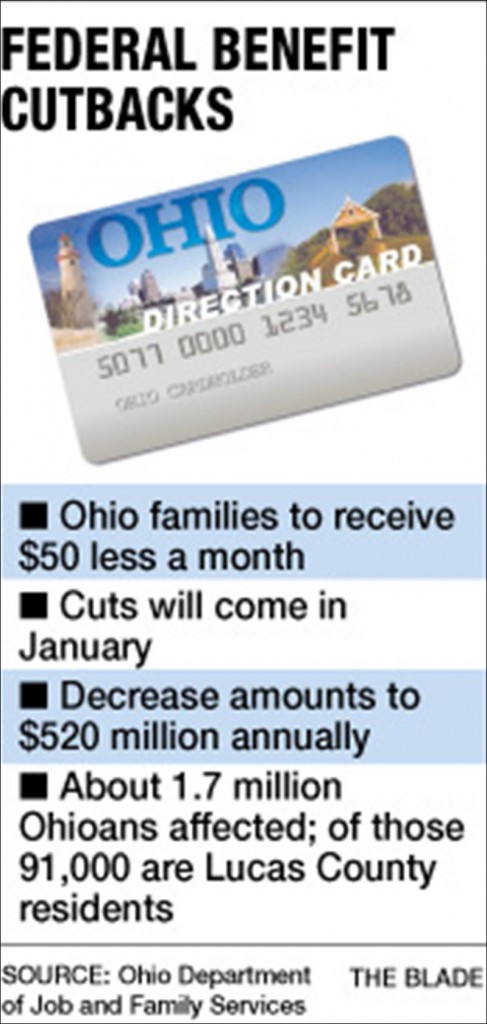Benefit to fall $50 a month starting in January
Kate Giammarise
The Toledo Blade
11/12/2012
 Ohio families receiving food stamps could get an unwelcome surprise come January: $50 less every month in assistance.
Ohio families receiving food stamps could get an unwelcome surprise come January: $50 less every month in assistance.
For the 869,000 households enrolled in the program for the poorest Ohioans, that could amount to about $520 million annually out of the grocery budgets.
Because of the way the federal government calculates utility expenses for people receiving the benefit, a mild winter nationwide last year, and a lower price for natural gas, many families could experience a significant cut in aid, those familiar with the program say.
Recipients should get a letter from the state Department of Job and Family Services this month explaining the change, said Ben Johnson, a spokesman for the agency.
Meanwhile, food banks and others that distribute food assistance are bracing for increased demand.
“They are going to increase hunger among our most vulnerable — working families, seniors, children, and persons with disabilities,” said Lisa Hamler-Fugitt, executive director of the Ohio Association of Foodbanks.
Ms. Hamler-Fugitt said her organization is particularly concerned that some seniors or persons with disabilities who have a low benefit amount could lose all their monthly assistance.
“We’re really worried about [the change],” she said.
What’s called the “standard utility allowance” — the amount deducted from a person’s income when the state determines his or her eligibility for the food stamp program — will decrease by $166 for 2013, translating to about $50 less per household in food assistance. State Job and Family Services officials tried to appeal the change to the U.S. Department of Agriculture, which oversees the food stamp program, officially known as the Supplemental Nutrition Assistance Program, but the USDA denied the request…
The article continues at The Toledo Blade.
Update: Surprise! Jobless Claims Up 78,000 Week After Election; PA, OH Worst Hit
The Department of Labor has announced that new jobless claims rose by a staggering 78,000 in the first week after the election, reaching a seasonally-adjusted total of 439,000. Over the past year, and in the weeks leading up to the election, jobless claims were said to be declining, dipping as low as 339,000, with the media proclaiming that they had reached the “lowest level in more than four years.” Now, suddenly, the news seems far less rosy…







